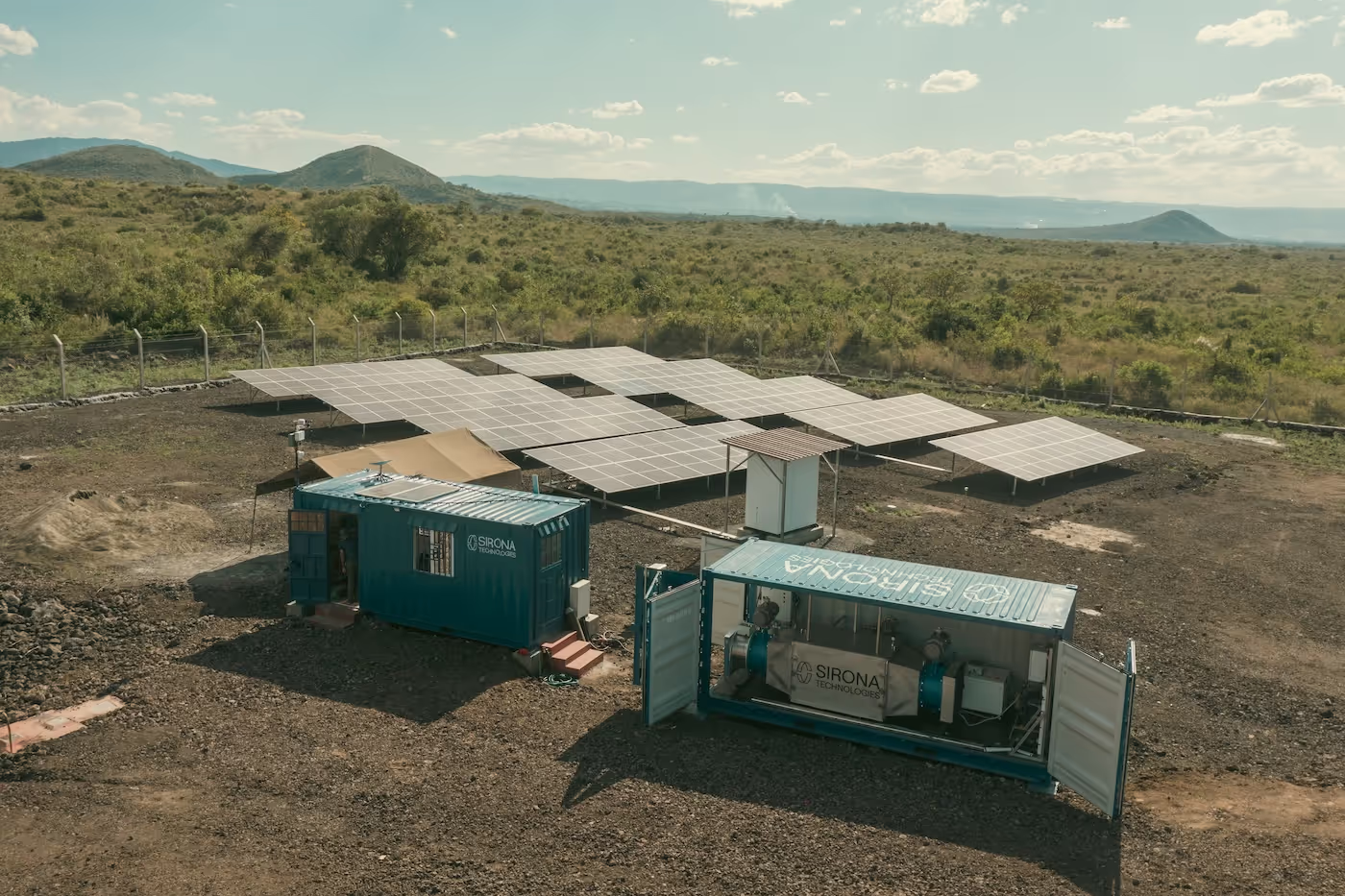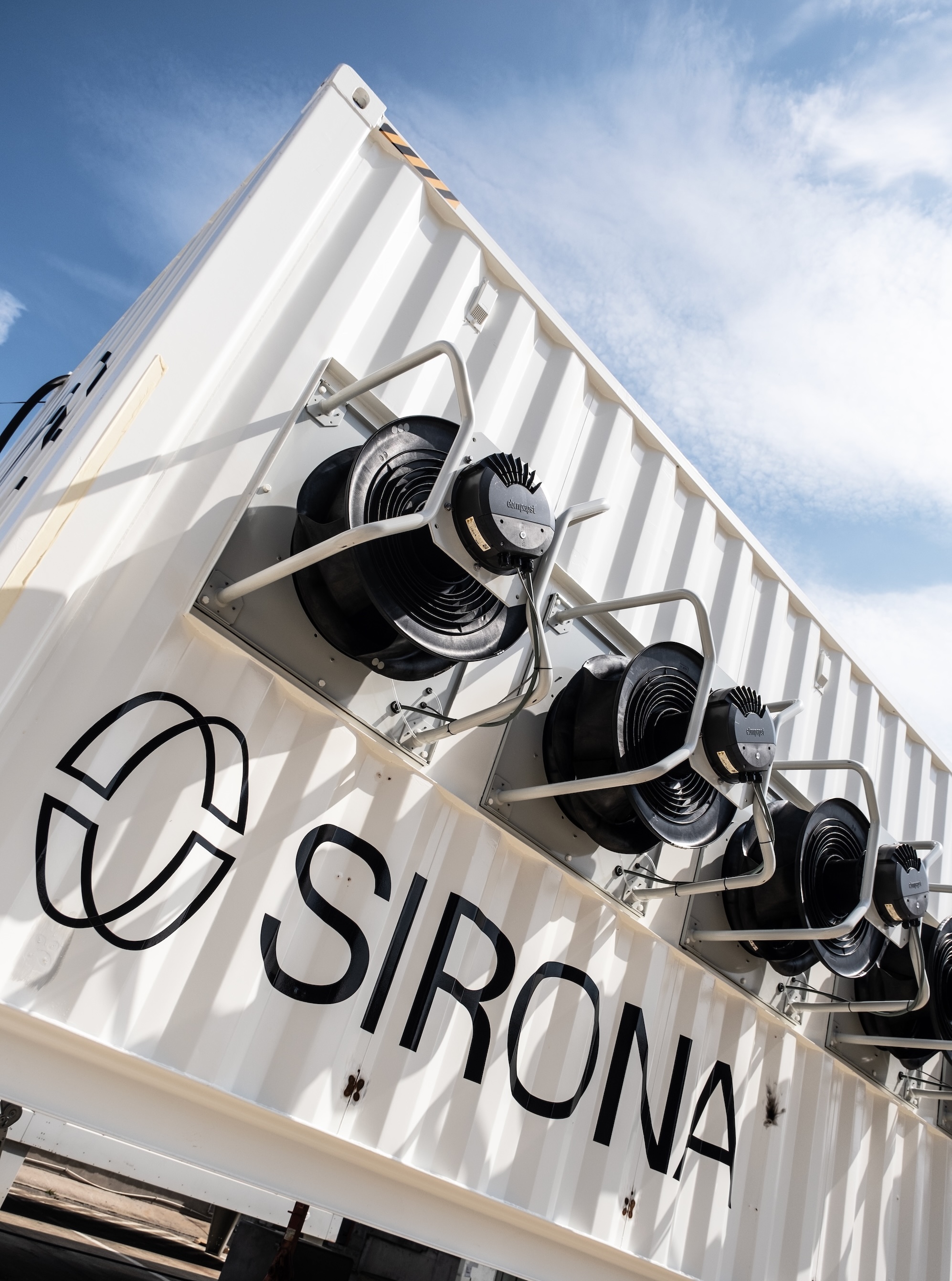
Latest Update
Sirona Technologies publishes their Master Plan – Learn more
Sirona Technologies publishes their Master Plan – Learn more
Sirona Technologies publishes their Master Plan – Learn more







The CO2 we capture is permanently stored. Our partner injects it in basalt rock, where it mineralizes to turn into rock itself. It won't come back out.

We use sensors to measure how much CO2 we capture, and deduct what we emit. Trusted third-parties verify our data to give you the certainty you deserve.

Introducing DAC technology can create stable demand for electricity, which can attract industries, create jobs, and stimulate economic growth.

We deploy Direct Air Capture projects in regions with abundant renewable energy and permanent CO2 storage. Our first site is operational in Kenya, with more launching soon.





We deploy to countries where we can leverage the exponential growth of renewables to get access to an abundance of clean energy that will get cheaper over time.

Thanks to our access to abundant, clean and cheap energy, we can put more emphasis on building simple machines with very low capital expenditure (capex).

Our modular technology is completely built in a factory, not assembled in the field, which steepens the learning curve and brings costs down faster. It also allows us to start quickly and scale to very large sizes without managing multiple plants.
Reach out to take the first step toward offsetting your unavoidable carbon emissions.
Our machines pull air through a chemical filter, which selectively adsorbs CO2, while the rest of the air goes through. When the chemical filter is saturated in CO2, we inject steam instead. This heats up the chemical filter and releases the CO2 so we can capture it. We then give the CO2 to a partner who injects underground, in basalt rock. The rock reacts with the CO2 and turns the CO2 into rock itself! This permanently stores it.
If we had to remove all the CO2 we need to remove over the next century, about a 1000 giga-tonnes, we would need to plant a new forest the size of Asia. Trees have many ecosystem benefits that machines don't have, and so we should plant as many trees as we can, but they unfortunately won't be enough to fight climate change.
Today, the world emits about 40 GT of CO2 per year in the air. If the world manages to do a great job at reducing emissions over the next three decades, we might be able to reduce that to 10 GT of CO2 per year. If Direct Air Capture was to compensate for those last 10 GT of CO2 per year, we would need about 150km x 150km of solar panels to power it. That can sound like a lot, but it's only about 10% of the renewable energy we will have to build for the clean energy transition anyway. So it's a lot, but also actually doable.
We think Kenya is one of the best places in the world for Direct Air Capture. First, it has an abundance of renewable energy. It's grid is already 90%+ renewable, and they have an excess of geothermal energy.
Second, it has an ideal geology for CO2 storage. And lastly, the government is very supportive of Direct Air Capture and welcoming the industry with open arms, as they understand their country's potential and the co-benefits it will provide to its communities.